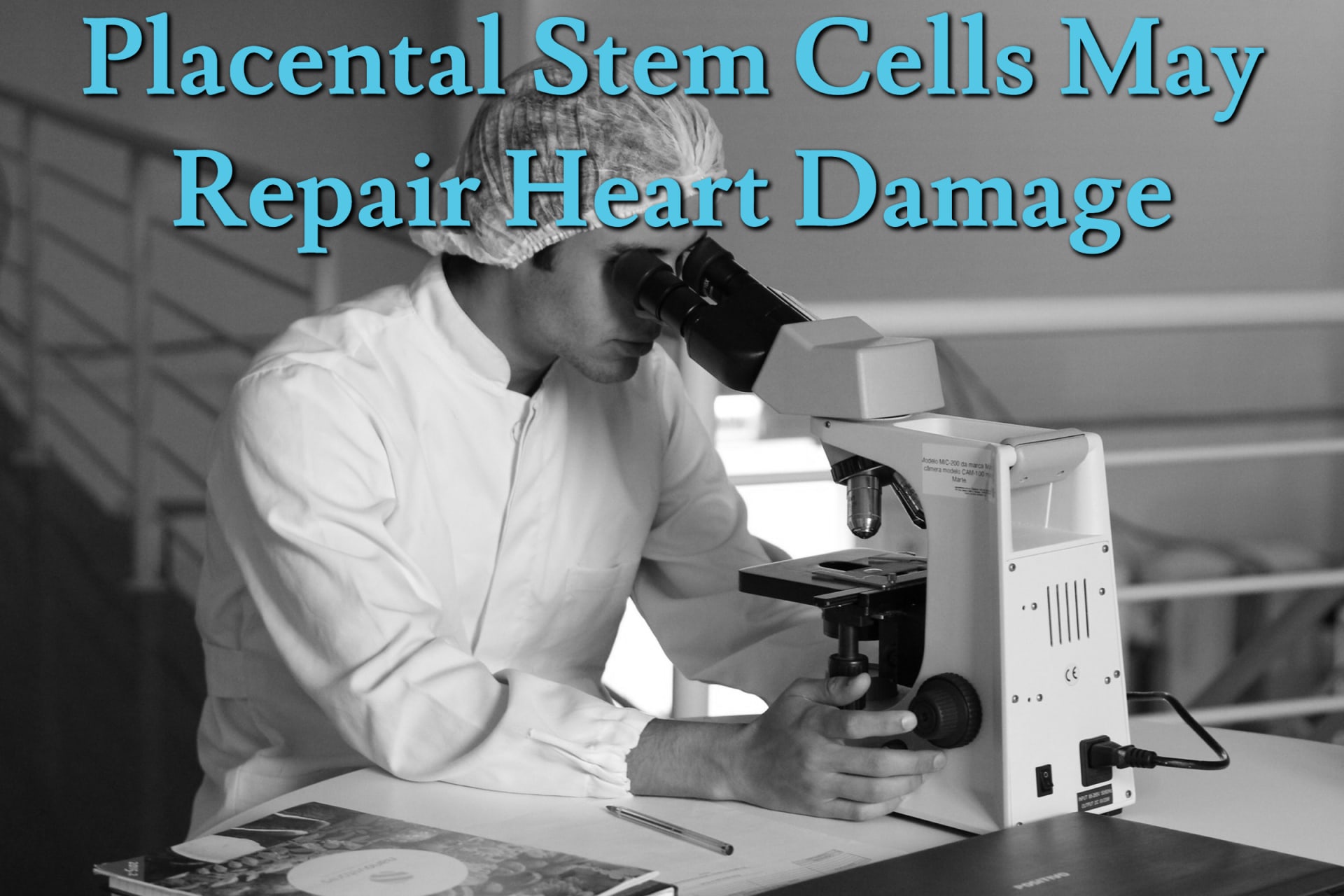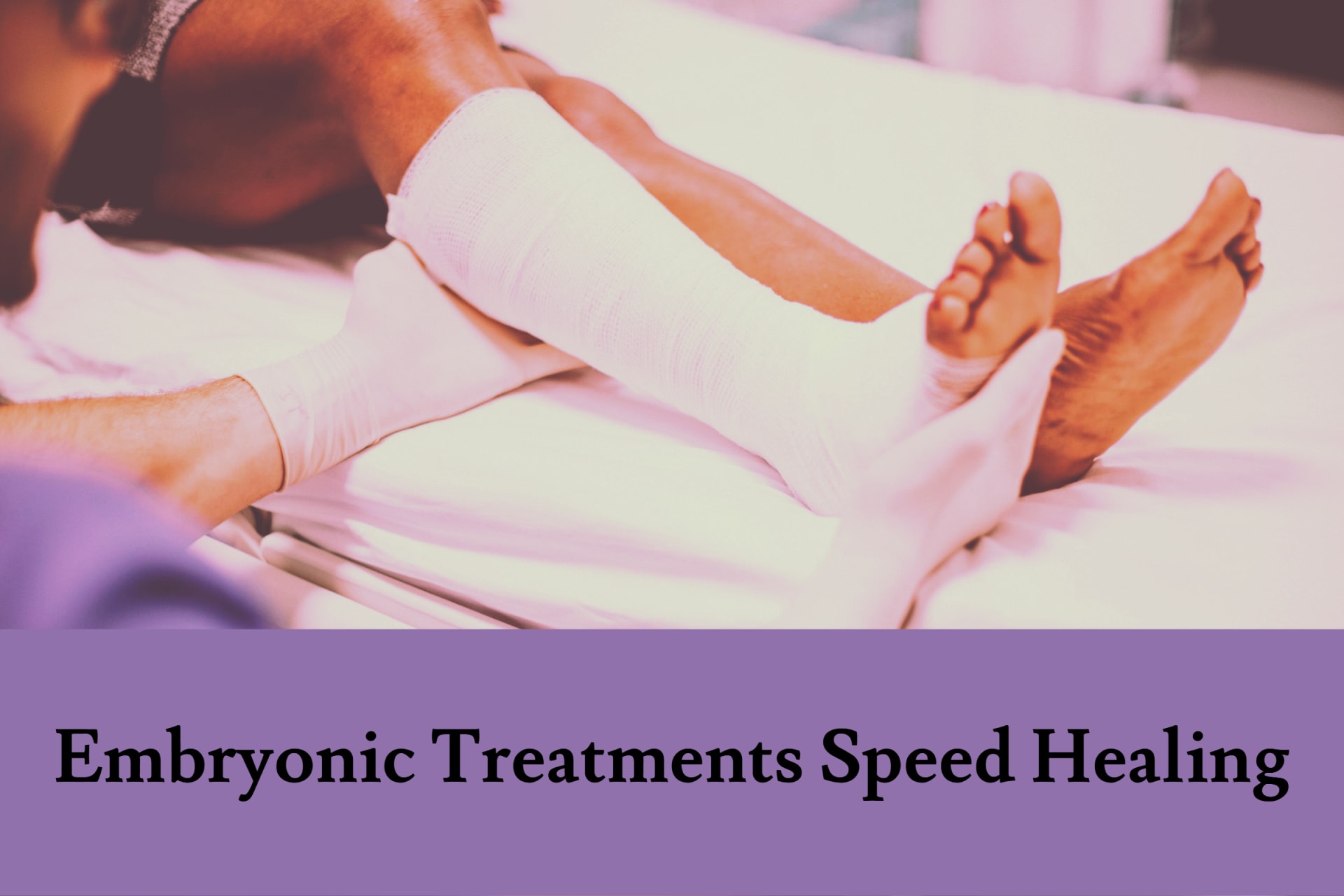Recreating Embryonic Conditions Help Bones Heal Faster
Finding a Medicare Physical Therapist You Can Trust
May 22, 2018
Study Shows Placental Stem Cells Could Aid in Regeneration of Heart Damage
August 2, 2019In the past, a broken bone had to heal on its own; then in the 1980s, electrical bone stimulation was applied to heal bones faster, but with minimal effect. Things are relatively the same today. If you break a bone you must wait for that bone to heal based upon its size and your health. Now, the medical community is evaluating the benefits of emryonic treatments.
There is mounting evidence that using stem cells at the site of a bone break decreases healing time. Like many other conditions undergoing stem cell treatment, bone breaks may become less of an issue for a variety of people. Athletes, soldiers, and first responders can’t usually afford the downtime associated with an injury. Let’s take a look at how this promising new procedure works.
Manipulating Stem Cells
Developed by Professor Eben Alsberg of the University of Illinois, the key to speeding up recovery time with stem cells is recreating embryonic conditions. This method uses stem cells and flexible implantable plates to hold and stabilize the bone. This, in turn, helps promote the healing of substantial breaks or defects.
The technique, in a sense, tricks the stem cells to respond as if they were in embryonic conditions. It does this by applying the same type of stress with the implantable plates as they would in the womb. This pressure, in turn, causes the stem cells to differentiate (the transformation into a specific type of cell) into bone or cartilage and promotes cell regeneration in the bone as a whole. If stem cells don’t have the right stimulus, they won’t differentiate into the needed type of cells. Without the plates applying the right amount of pressure, the stem cells would be useless. They require this pressure to transform into the right kind of cells to heal a major fracture.
Under normal conditions, when you break a bone, stem cells in your bone marrow transform into cartilage and bone cells. The new cells patch the fracture in the bone much the same way you’d repair cracked plaster. The cells fill in the break and then slowly harden until healing occurs. By simulating embryonic conditions, the process speeds up considerably. The stem cells will either directly aid in the regenerative process or stimulate nearby cells to help form bone.
The Right Application of the Stem Cells is Crucial
Stem cells application must precise for optimal healing. Proper application allows the embryonic treatments to differentiate between other cells to improve healing. A singular approach to prepare the cells allows medical professionals to use them easily. Careful implantation bolsters the cellular differentiation occurrences at the heart of embryonic bone development.
In the preparation technique, cultured stem cells connect to one another to form plugs or sheets. Gelatinous microprarticles packed with growth factors are also included as part of the preparation. These help aid the stem cells in the differentiation process. The sheets and plugs can be manipulated and implanted. They also lower the tendency for cells to drift away from the injury site. Professor Alsberg refers to these types of materials, “condensates.” Prior studies had used these condensates in rodents to heal bone issues in their skulls. It was there that the first glimpse of what the stem cells could do for bone fractures and defects was first realized. The breakthrough was when the condensates stayed in place in the fracture and healing took place more swiftly.
Creating Embryonic Conditions
In order to create the required pressure for stem cells to experience embryonic conditions, orthopedic surgery devices known as “fixators” are part of the solution. Fixators are metal bars or plates which stabilize the bone where a fracture has occurred. The fixators, in conjunction with stem cells are flexible and allow the right amount of pressure to re-created embryonic stresses.
Researchers used rats to learn how the mechanical forces existing inside bone defects affect the ability of condensates to drive bone regeneration. When condensate sheets were used with a flexible fixator in rats with an existing femur defect, they observed that healing was heightened and the bones had improved mechanical function as compared to control group rats which received condensates and rigid, normal fixators. The findings show that the emerging model of regenerative rehabilitation, a concept which uses both principles from physical therapy and regenerative medicine is viable. The goal is to understand how mechanical stimulants impact cell behavior to affect patient outcomes better and minimize the use of unneeded drugs and medical devices.
The Future of Regenerative Bone Rehabilitation
It’s clear that properly utilized stem cells along with with the right stimulus to create embryonic-like conditions reduce heal time. This means that countless individuals can return to their pre-injury lives sooner than expected. Patients will no longer have to suffer with painful fractures as long as typically expected. Jobs, hobbies, and even exercise routines can begin again thanks to the use of stem cells and fixators to recreate embryonic conditions.

